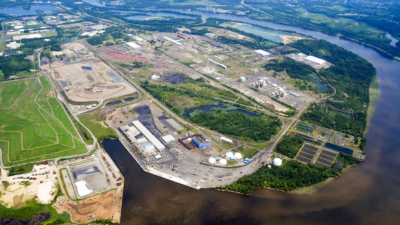Artificial Intelligence (AI) stands as the beacon of innovation, poised to usher in a new era of innovation.
In Part One of this series, I delved into how the shifting population demographics are setting up a prolonged labor shortage.
In Part Two, I look at how technology like generative AI has the potential to simultaneously offset and exacerbate some of that disruption and how AI will be transformative for the economy, job creation and the future of supply chains.
Fire, Electricity… AI?
Sundar Pichai, the CEO of Google, has stated that “AI could have implications for humanity that are more profound than electricity or fire.” While he certainly has a horse in the race, my on-the-ground research suggests the magnitude of the impact of the technology could exceed that of the internet.
This summer, I embarked on a month-long journey in San Francisco’s Mission District, immersing myself in the heart of AI innovation near OpenAI’s headquarters. Through meeting with several pioneering AI startups, I gleaned key insights into the technology’s transformative potential.
Elijah Sorey, co-founder of Y-combinator backed Squack, an AI and ML focused startup I spoke with emphasized, “We are in a time of simultaneously unparalleled disruption and opportunity as AI stands to revolutionize nearly every aspect of business in the coming years.”
Increased Productivity
U.S. productivity growth, which has averaged around 1.4% annually over the past decade, is projected to increase 50% in McKinsey’s mid-point scenario, reaching an estimated 2.1% by the end of 2030. This surge in productivity promises to be a game-changer.
McKinsey’s research further suggests that AI could potentially boost global GDP by up to $13 trillion by 2030. This translates to a potential cumulative increase of about 10% in global GDP over the decade, and this enhanced economic productivity will drive consumer demand and subsequently demand for industrial space.
The implications of such an infusion of capital into the economy are bound to reverberate across various industries, creating unprecedented opportunities for growth and innovation. The McKinsey research supports the anecdotal sentiment I observed as their latest estimates suggest that 30% of the hours worked globally could be automated by 2030 and 50% by 2040. While this could eliminate as many as 800 million jobs globally by 2030, it is expected to create 950 million (an important note is that in all McKinsey’s adoption scenarios, AI creates more jobs than it eliminated).
Resilient Labor Segments
The adverse impact will largely be felt in lower-wage, lower value-add segments such as customer service, office support, and food services, in contrast, there will be increased demand for healthcare, STEM, and managerial positions.
As the specter of AI-induced job displacement looms large, McKinsey’s research has identified six distinct labor segments that are not only resilient to AI-driven change but are also anticipated to experience growth. One such segment is transportation services. Contrary to fears of automation, this sector is projected to outpace national growth trends, suggesting continued demand for warehousing and distribution labor.

Impacting CRE Intelligence
While there is a lot of enthusiasm for the potential implications of AI for real estate market intelligence (supply-side), a key constraint is that the technology requires large volumes of quality and relatively homogenous data.
The commercial real estate industry is known for its data being poor quality, idiosyncratic in nature, and there are far fewer data points relative to sectors where AI has penetrated successfully, such as fraud detection, where there are billions of transactions to train the models. To see the challenges associated with big-data applications to real estate, one can look at Zillow’s $1.4B loss iBuying properties in the residential space where the data points are more prevalent (nearly 150 million homes in the U.S. vs. ~6 million commercial buildings) and inherently more homogenous.
Despite the challenges on the supply-side, we do see significant opportunity in leveraging AI to monitor demand-side factors like freight volumes, labor market activity, consumer activity, etc. to provide a competitive advantage for our clients in the location selection process.
Supply Chain Implications
One of the most intriguing aspects of the AI revolution lies in its impact on supply chain management. While the exact scale is challenging to predict, AI has already been reshaping supply chains. A prerequisite for the application of AI is the digital transformation many firms have invested in heavily the last few years to enhance transparency, reduce costs, and unearth hidden risks.
A McKinsey survey suggested the business unit within companies that has seen the greatest cost reduction by leveraging AI is supply chain. This is because among the strongest use cases for the technology in its current state is pattern recognition, predictive and prescriptive analytics, thus making it a valuable tool for organizations such as the Port of Virginia who are leveraging it to forecast and optimize capacity.
The Most Adaptive Will Survive
As the AI revolution continues to take shape, the quote often attributed to Charles Darwin comes to mind: “It is not the most intellectual of the species that survives; it is not the strongest that survives; but the species that survives is the one that is able best to adapt and adjust to the changing environment in which it finds itself.”
This rings true today as the workers, companies, and communities most adept at navigating change will be the most resilient as the AI Revolution continues to take hold.

 Bret Swango, CFA
Bret Swango, CFA

 Craig Hurvitz
Craig Hurvitz
 Lauren Pace
Lauren Pace Ronna Larsen
Ronna Larsen
 Tom Golarz
Tom Golarz Michael Golarz
Michael Golarz